- Home
- F. Scott Fitzgerald
Beautiful and Damned (Barnes & Noble Classics Series) Page 2
Beautiful and Damned (Barnes & Noble Classics Series) Read online
Page 2
1921 Scott and Zelda spend months traveling in England, France, and Italy. They return in August to Minnesota, where Zelda gives birth to a daughter, Frances Scott (“Scottie”).
1922 The Beautiful and Damned, about the dissipated life of an artist and his wife, is published. Another collection of short stories, Tales of the Jazz Age, is published in September. The family moves to Great Neck, Long Island (New York). Fitzgerald’s drinking habit grows. T. S. Eliot’s The Waste Land and James Joyce’s Ulysses are published.
1923 The Vegetable, a play the Fitzgeralds thought would make them wealthy, is published but fails at an Atlantic City tryout. Jazz musician Duke Ellington first plays in New York.
1924 The family moves to the French Riviera, where Zelda has an affair with Edouard Jozan, a French pilot. Fitzgerald drafts his masterpiece, The Great Gatsby. The Fitzgeralds befriend wealthy American expatriates Gerald and Sara Murphy. The Fitzgeralds spend several months in Rome.
1925 The Great Gatsby is published. Fitzgerald moves his family to Paris, where he meets Ernest Hemingway. Gangster Al Capone rises to the top of organized crime in Chicago.
1926 Fitzgerald publishes All the Sad Young Men, a collection of stories that includes one of his best, “The Rich Boy,” which examines how wealth influences character. The family spends most of the year in the Riviera, returning to America in December. Ernest Hemingway publishes The Sun Also Rises.
1927 Fitzgerald moves with Zelda to Hollywood, California, to write a screenplay. They move again, to Delaware, where Zelda begins ballet lessons. Virginia Woolf’s To the Lighthouse is published. Charles Lindbergh completes the first nonstop solo flight across the Atlantic.
1928 The Saturday Evening Post publishes “The Scandal Detectives,” the first of a series of stories based on Fitzgerald’s youth. The family moves again to Paris, where Zelda’s ballet training damages her health and leads to marital problems. The family returns to Delaware in the fall.
1929 Once again the family goes back to Europe. Zelda publishes “The Original Follies Girl” in College Humor. The American stock market crashes, and the Great Depression begins.
1930 In April, Zelda suffers the first of a series of nervous breakdowns and is admitted to a Paris clinic. In May, she goes to a sanatorium in Switzerland where she is diagnosed as schizophrenic.
1931 Fitzgerald travels alone to America to attend his father’s funeral. He accepts an offer from Metro-Goldwyn-Mayer (MGM) to work on a screenplay in Hollywood. He returns to Europe and travels between Paris and Switzerland. In July the Swiss sanatorium releases Zelda. The Fitzgerald family returns to America in September. In December, Fitzgerald goes alone to Hollywood to work for Metro-GoldwynMayer.
1932 Zelda suffers another collapse and is hospitalized in Baltimore. She will be an inpatient or an outpatient at a sanatorium for the rest of her life. Fitzgerald moves to Baltimore to join his wife. Zelda publishes an autobiographical novel, Save Me the Waltz, completed in the clinic.
1933 Prohibition ends. Adolf Hitler becomes chancellor of Germany.
Gertrude Stein publishes The Autobiography of Alice B. Toklas.
1934 Zelda suffers a third breakdown and returns to the Baltimore clinic. Fitzgerald publishes Tender Is the Night, a novel about a psychiatrist in Europe who marries one of his patients and eventually unravels. Henry Miller publishes Tropic of Cancer in France.
1935 Taps at Reveille, Fitzgerald’s fourth short-story collection, is published. He moves back and forth between Baltimore, New York, and North Carolina.
1936 Fitzgerald’s confessional “Crack-Up” essays, which describe his sense of emotional depletion, appear in Esquire.
1937 Financially strained, Fitzgerald accepts a lucrative scriptwriting contract with MGM. In December, the six-month contract is renewed for one year. He starts writing the screenplay for Three Comrades, his only script to make it to film. He begins an affair with gossip columnist Sheilah Graham that will last until his death.
1939 Fitzgerald, whose MGM contract was not renewed at the end of 1938, starts work on a screenplay for United Artists but is fired after a drinking binge. Later that year he works as a freelance screenwriter in Hollywood. He starts The Last Tycoon, a novel about life in Hollywood. He is hospitalized twice following drinking bouts. World War II begins.
1940 With The Last Tycoon only half finished, F. Scott Fitzgerald dies of a heart attack on December 21, in Graham’s Hollywood apartment. He is buried in the Rockville Union Cemetery in Maryland.
1941 The Last Tycoon is published.
1945 The Crack-Up is published.
1948 Zelda Fitzgerald dies in a fire at a hospital in North Carolina.
INTRODUCTION
F. Scott Fitzgerald wrote The Beautiful and Damned, his second book, when he was only twenty-five. It was published in 1922, just as the Jazz Age was beginning to hit its stride. The war was over, the economy was booming, the skyscrapers were rising, the flappers were vamping, the alcohol was flowing (despite Prohibition), the music was swinging, and the party appeared to be never-ending. America was, as Fitzgerald later said, “going on the greatest, gaudiest spree in history and there was going to be plenty to tell about it” (The Crack-Up, with Other Pieces and Stories, p. 59; see “For Further Reading”). Who better to chronicle the splendor of this new age than Fitzgerald, the man who since the rip-roaring success of his first novel had been called its most notorious voice?
Although he was the poster boy for this extravagant age, with his second book Fitzgerald chose to focus not on the splendor of the era, but instead on its spoils, the ugly aftermath of the party. The Beautiful and Damned is a cautionary tale of a young, insouciant, and irresponsible couple, Anthony and Gloria Patch, and their inevitable downward spiral. In the beginning, they are carefree and happy, buoyed by their love for each other and the hope that Anthony will one day inherit his grandfather’s vast fortune. By the end, they have deteriorated to such an extent that both appear to be bitter, empty shells of their former selves. Gloria has lost her beauty and with it her confidence, and Anthony has metamorphosed into a dissolute drunk who behaves like a child. Theirs is a bleak story without any real promise of redemption.
The Beautiful and Damned is Fitzgerald’s least-known novel, yet it provides fascinating insight into his development as a writer and his evolution as a person. Stylistically, it functions as the intermediate step between the unfocused but exuberant vitality of his debut novel, This Side of Paradise, and the superb craftsmanship of his third and in many ways greatest book, The Great Gatsby. While This Side of Paradise is a discursive story with digressions aplenty and The Great Gatsby is a seamless, nearly flawless narrative, The Beautiful and Damned is somewhere in between: a fully fashioned and controlled story that nevertheless often belabors its points and exhausts its themes. Despite its defects, the book is a compelling story that allowed Fitzgerald to explore fundamental questions and themes he developed throughout his fiction: What is the purpose and the cost of maintaining dreams? What motivates failure? What causes people to fall in and out of love? And what makes a character tragic? Tragedy, of course, was a running theme in Fitzgerald’s psyche and his life.
When Fitzgerald began to write The Beautiful and Damned, his life was anything but tragic. His first novel had just been published to wide critical and popular acclaim, selling more than 75,000 copies. He was universally hailed as a literary wunderkind and had become one of the highest-paid short story writers in the business. He had finally won the hand of his sweetheart, Zelda, and together they were living the high life in New York, feted everywhere as the glamour couple. At the age of twenty-four, Fitzgerald had achieved all his dreams, and the future looked infinitely bright and promising. Yet within fourteen years he would hit rock bottom and become an alcoholic living in a cheap motel, eating twenty-five-cent meals and washing his own clothes in the sink while his wife was treated for schizophrenia in a nearby sanatorium. By then, unable to write and owing tens of thousands of dollars, overwhelme
d by his dire situation, Fitzgerald would crack, suffer a nervous breakdown, and, like his character Anthony Patch, become a broken man.
While there is no simple explanation of how Fitzgerald’s downfall came about, there is no question that by writing The Beautiful and Damned he was expressing his fears of dissipation and, to a certain extent, prophetically anticipating and foreshadowing his own decline. Although he created several memorable heroes, in many ways Fitzgerald was his own greatest tragic figure. In keeping with the credo of his Romantic idols, like John Keats, he lived life at full speed, flinging himself into every experience with frightening energy to enlarge his powers as an artist. He married a woman who zealously asserted her own will and her thirst for life without fear, inhibition, or, at times, regard for him. Fitzgerald always had the capacity to recognize the risks inherent in his own behavior, to acknowledge that he was self-destructive, but he lacked the desire, strength, or ability to change. His resistance to change was perhaps a result of his artistic commitment. Fitzgerald’s first and foremost priority was to experience life, then to write about it. Everything else, even self-preservation, came second. While his lack of caution may in retrospect appear irresponsible, even indeed tragic, he did produce magnificent writing.
From the beginning, Fitzgerald felt that he was destined to be a writer. He was born in 1896 in St. Paul, Minnesota, to Edward Fitzgerald and his wife, Mollie, a middle-class Irish-American Catholic couple. Just three months before he was born, Scott’s parents had lost their two young daughters; although Mollie never talked about the dead children, the loss endowed her son with a heightened sensitivity to the past and to the fragile nature of life.
In an effort to quell her grief, Mollie spoiled and indulged her young son, and Scott quickly developed into a precocious and perceptive child. While his mother was an outspoken and ambitious woman, his father was a shy, retiring man. A southern gentleman and a distant relative of Francis Scott Key—the author of “The Star Spangled Banner” and Scott’s namesake—Edward told tales of the old South and the Civil War that fascinated Scott and invested him with romantic ideals at a young age.
When Scott was still a boy, Edward moved the family to Buffalo, New York, where he started a new business. The business failed, and then Edward was fired from a position as a salesman at Procter and Gamble. Fitzgerald later remembered that his father was never the same. While he had left in the morning a confident, capable person, “He came home that evening, an old man, a completely broken man. He had lost his essential drive.... He was a failure the rest of his days” (quoted in Some Sort of Epic Grandeur, p. 20). The family returned to St. Paul, moved in with Mollie’s wealthy mother, and lived off a substantial inheritance from Mollie’s father, who had been a well-to-do grocer and businessman.
Although her husband had failed, Mollie was determined that her son would succeed. She dressed Scott in the finest clothes, enrolled him in dance school and the St. Paul Academy, and made sure that he was introduced to the best families in town. Scott was an articulate, attractive, and sophisticated young man who knew very well how to sweet-talk the girls and please the parents. He fit right into St. Paul, where he joined in the rounds of sleigh rides, picnics, and dances. But like Basil Lee—his fictional alter ego in the “Basil and Josephine” short stories—Scott often had a hard time reining in his intelligence and his “fresh” know-it-all manner. He once corrected his teacher, admonishing her that Mexico City wasn’t the capital of Central America, and often endeavored to tell other children how they could improve themselves to become more popular. When he was twelve, the school magazine asked if someone would find a way to shut up Scott or poison him please! (Turnbull, Scott Fitzgerald, p. 21). A naturally dramatic child and somewhat of an exhibitionist, Scott was interested in the theater and would often, along with his friends, act out plays he had seen. He also displayed an early gift for writing, and had his literary debut at thirteen when his first piece was published in the school’s magazine, St. Paul Academy Now and Then. Scott could hardly contain himself and hung around after classes, excitedly asking students if they had read it.
When he was fifteen, Scott’s mother sent him to the Newman School, a Catholic boarding school in Hackensack, New Jersey, in order to improve his chances to attend a top university. Scott showed off his vast knowledge in class, bossed people around on the football field, boasted a few too many times, and quickly became persona non grata at the school. He encapsulated his position there wonderfully in the short story “The Freshest Boy”: “He had, indeed, become the scapegoat, the immediate villain, the sponge which absorbed all malice and irritability abroad” (The Basil and Josephine Stories, p. 61). While it may have been painful at the time, his pariah status helped foster Scott’s development as an artist, in that it allowed him to channel most of his energy into writing short stories and plays. By his second year he had achieved a belated kind of popularity, helped along by his status as a “writer,” his humbled manner, and his improvements on the football field.
At seventeen, Fitzgerald entered Princeton University, a long-held dream. At the time, he believed that “life was something you dominated if you were any good” (The Crack-Up, p. 70), and he planned to be not just good but great. He set highly ambitious goals for his tenure at Princeton: He wanted to be a football hero, and president of the Triangle Club, a theater group that put on a musical every year. The first goal was quickly squashed, since he didn’t even make the freshman team, but the second he pursued with dogged determination. Always a lackluster student, he quickly decided that classes were a waste and spent most of his time in his room writing musicals to submit to the Triangle or pieces for the Princeton Tiger, a humor magazine. He would often stay up all night, then wait outside of class for the editor of the Tiger, to waylay him with more submissions. His classmates would later remember Fitzgerald as an exuberant, gregarious young man who, as John Peale Bishop said, “looked like a jonquil” (quoted in Kazin, F. Scott Fitzgerald: The Man and His Work, p. 46), and was bursting with enthusiasm and emanating a magical, incandescent aura around him.
Although he didn’t pay much attention to his English professors, Fitzgerald did form a literary brotherhood of sorts with his classmate John Peale Bishop. According to Fitzgerald, Bishop taught him what was and wasn’t poetry and awakened him to the magic of the Romantic poets. Fitzgerald also met Edmund Wilson, an upperclassman who, despite his highbrow tastes, wrote for the Triangle and would become a lifelong friend. By his junior year Fitzgerald had written two Triangle musicals and was well placed to become president. Unfortunately, he had also severely neglected his studies. After he failed his make-up exams he was placed out of the running to be president of the Triangle Club. The dream was dead, and both college and life appeared meaningless: “It seemed on one March afternoon that I had lost every single thing I wanted” (Turnbull, p. 70).
Fitzgerald quickly replaced the Princeton dream with another—that of being a war hero. He received his commission as a second lieutenant in the fall of 1917, his senior year, and left school. As it turned out, he was a lousy soldier who fell off horses, improperly saluted his superiors, and poorly managed his regiment. He didn’t really believe in the war, and felt that all of the drills and practice skirmishes were nuisances that interrupted him from his real work: finishing his novel.
Convinced he might die in battle, Fitzgerald had hastily begun to write a coming-of-age story and every week spent half of Saturday and all of Sunday maniacally working on it in the officer’s club. Fitzgerald quickly finished the novel and in 1918 sent it to his friend and mentor Shane Leslie, who forwarded it to the publisher Charles Scribner’s Sons. Free to socialize, Scott finally allowed himself to have a little fun. He was now posted in Montgomery, Alabama, and while attending a dance he met one of its most celebrated belles, Zelda Sayre. Zelda was the youngest of the five children of Judge Anthony Sayre and already at nineteen an infamous beauty. Uninhibited, fearless, and effervescent, her exploits were legendary: She rode
on motorcycles, smoked at a time when it was taboo for women, turned cartwheels at dances when things got boring, and entertained beaus round the clock. In Fitzgerald’s eyes, Zelda was an original, both the embodiment of his ideal woman and a fierce, bold individual whose flame burned bright, and he pursued her relentlessly.
The end of World War I interrupted Fitzgerald’s courtship of Zelda. He and his troop were sent back East and then dismissed. Eager to earn some money, Fitzgerald quickly moved to New York and got a job in advertising, then wrote Zelda asking her to marry him. He continued to toil as a writer, composing short stories at night, but had little success. His stories, like his novel, were almost all turned down, and he papered the walls of his apartment with more than 120 rejection slips. Then Zelda, fearing he would never make enough money, threw him over. Suddenly life in New York seemed pointless. Fitzgerald moved back to St. Paul to rewrite his novel.
One of Fitzgerald’s abiding characteristics was his ability to bounce back. Time and again he would suffer a terrible blow, then recoup, and achieve an astounding success. He moved back into his parents’ house determined to write a novel that would sell. He holed himself away in his bedroom, taped a careful outline to his curtains, and subsisted only on the sandwiches and milk his mother supplied. After two months he had rewritten a book he had originally called “The Romantic Egotist”—a semi-autobiographical novel about his youth and time at Princeton—and transformed it into what he felt was a more accomplished piece of writing, now titled This Side of Paradise. He sent it off to Scribner’s, certain that it would be accepted. He confidently wrote his friend Edmund Wilson, “I really believe that no one else could have written so searchingly the story of the youth of our generation” (quoted in A Life in Letters, p. 17).

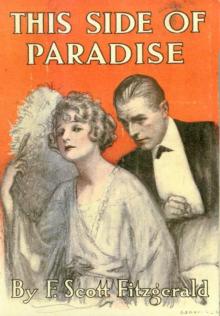 This Side of Paradise
This Side of Paradise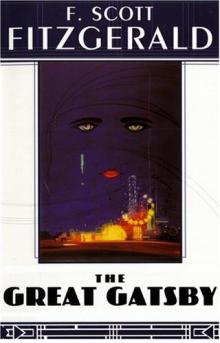 The Great Gatsby
The Great Gatsby Tender Is the Night
Tender Is the Night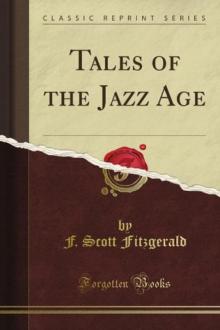 Tales of the Jazz Age (Classic Reprint)
Tales of the Jazz Age (Classic Reprint)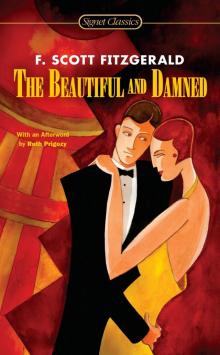 The Beautiful and Damned
The Beautiful and Damned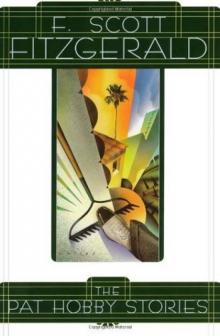 The Pat Hobby Stories
The Pat Hobby Stories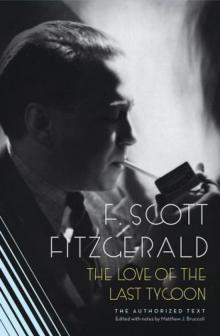 The Love of the Last Tycoon
The Love of the Last Tycoon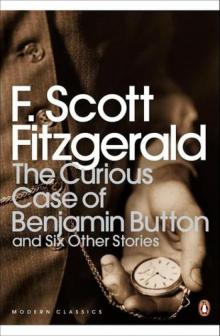 The Curious Case of Benjamin Button and Six Other Stories
The Curious Case of Benjamin Button and Six Other Stories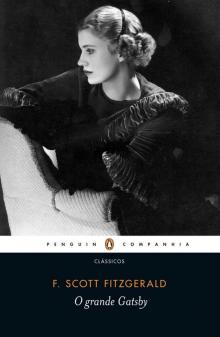 O Grande Gatsby (Penguin)
O Grande Gatsby (Penguin)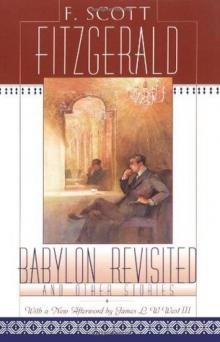 Babylon Revisited and Other Stories
Babylon Revisited and Other Stories The Crack-Up
The Crack-Up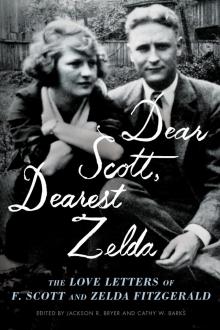 Dear Scott, Dearest Zelda
Dear Scott, Dearest Zelda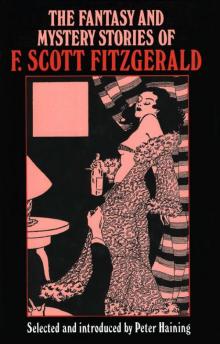 The Fantasy and Mystery Stories of F Scott Fitzgerald
The Fantasy and Mystery Stories of F Scott Fitzgerald Flappers and Philosophers
Flappers and Philosophers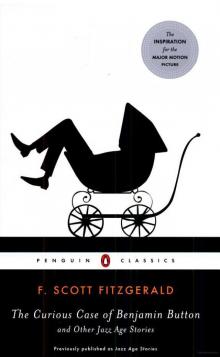 The Curious Case of Benjamin Button and Other Jazz Age Stories (Penguin Classics)
The Curious Case of Benjamin Button and Other Jazz Age Stories (Penguin Classics)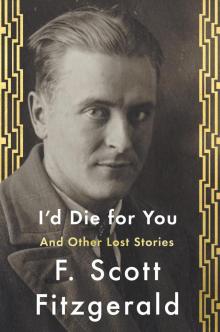 I'd Die For You
I'd Die For You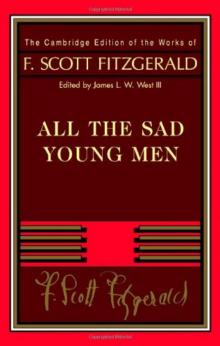 All the Sad Young Men
All the Sad Young Men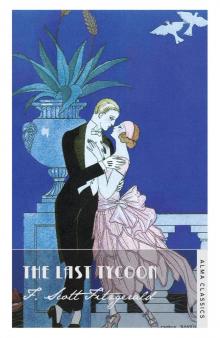 The Last Tycoon
The Last Tycoon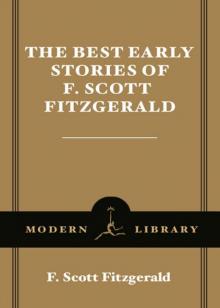 The Best Early Stories of F. Scott Fitzgerald
The Best Early Stories of F. Scott Fitzgerald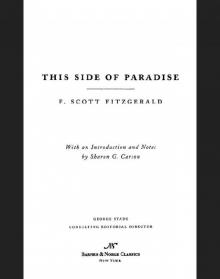 This Side of Paradise (Barnes & Noble Classics Series)
This Side of Paradise (Barnes & Noble Classics Series)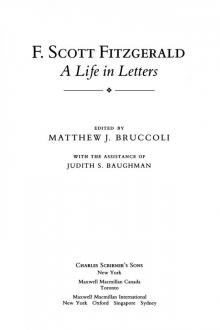 A Life in Letters
A Life in Letters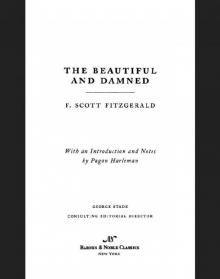 Beautiful and Damned (Barnes & Noble Classics Series)
Beautiful and Damned (Barnes & Noble Classics Series)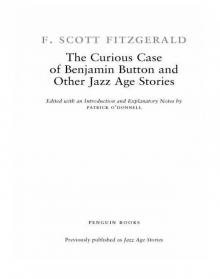 The Curious Case of Benjamin Button and Other Jazz Age Stories
The Curious Case of Benjamin Button and Other Jazz Age Stories Tales of the Jazz Age
Tales of the Jazz Age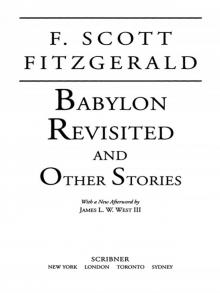 Babylon Revisited
Babylon Revisited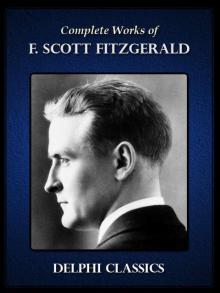 Complete Works of F. Scott Fitzgerald UK (Illustrated)
Complete Works of F. Scott Fitzgerald UK (Illustrated)